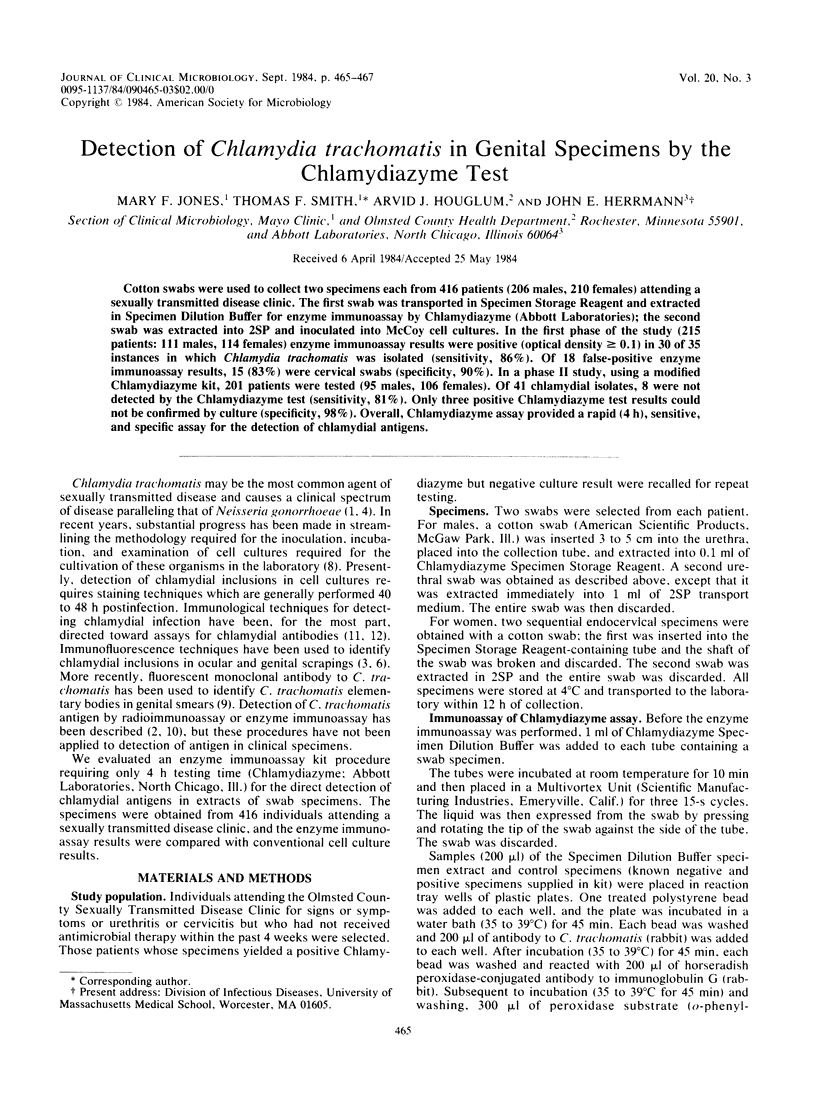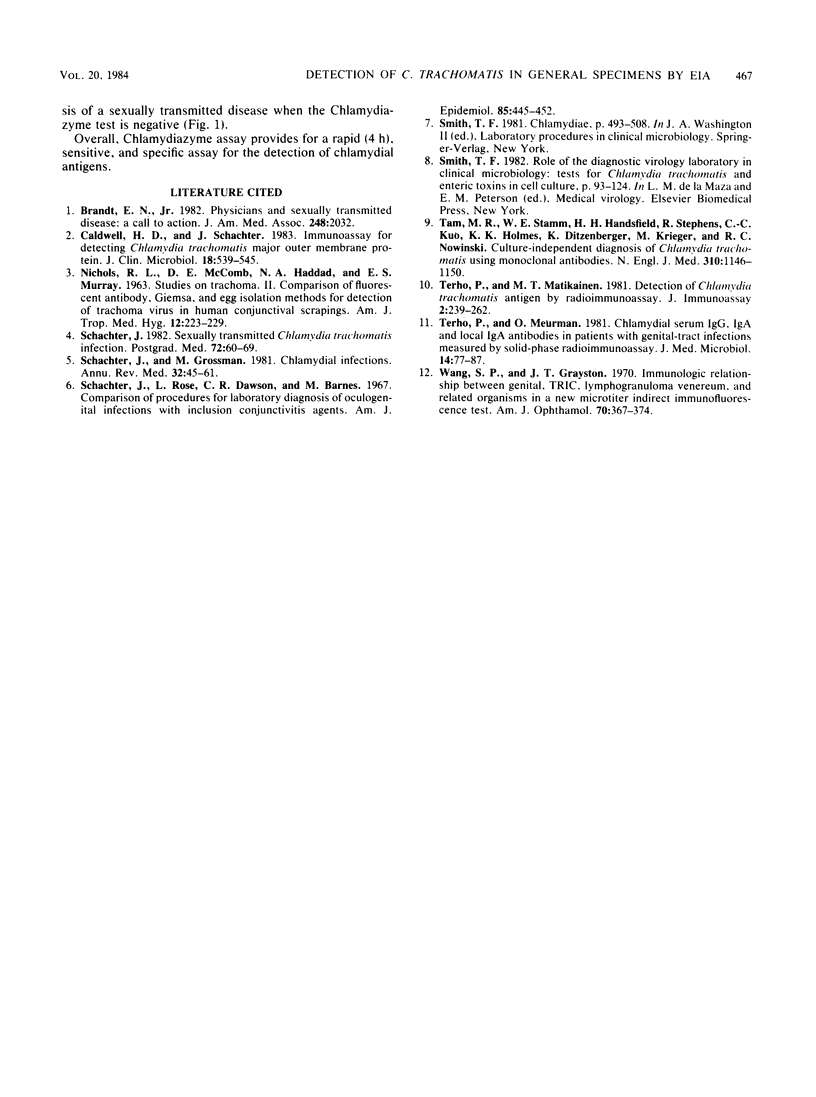Abstract
Cotton swabs were used to collect two specimens each from 416 patients (206 males, 210 females) attending a sexually transmitted disease clinic. The first swab was transported in Specimen Storage Reagent and extracted in Specimen Dilution Buffer for enzyme immunoassay by Chlamydiazyme (Abbott Laboratories); the second swab was extracted into 2SP and inoculated into McCoy cell cultures. In the first phase of the study (215 patients: 111 males, 114 females) enzyme immunoassay results were positive (optical density greater than or equal to 0.1) in 30 of 35 instances in which Chlamydia trachomatis was isolated (sensitivity, 86%). Of 18 false-positive enzyme immunoassay results, 15 (83%) were cervical swabs (specificity, 90%). In a phase II study, using a modified Chlamydiazyme kit, 201 patients were tested (95 males, 106 females). Of 41 chlamydial isolates, 8 were not detected by the Chlamydiazyme test (sensitivity, 81%). Only three positive Chlamydiazyme test results could not be confirmed by culture (specificity, 98%). Overall, Chlamydiazyme assay provided a rapid (4 h), sensitive, and specific assay for the detection of chlamydial antigens.
Full text
PDF


Selected References
These references are in PubMed. This may not be the complete list of references from this article.
- Brandt E. N., Jr Physicians and sexually transmitted disease: a call to action. JAMA. 1982 Oct 22;248(16):2032–2032. [PubMed] [Google Scholar]
- Caldwell H. D., Schachter J. Immunoassay for detecting Chlamydia trachomatis major outer membrane protein. J Clin Microbiol. 1983 Sep;18(3):539–545. doi: 10.1128/jcm.18.3.539-545.1983. [DOI] [PMC free article] [PubMed] [Google Scholar]
- NICHOLS R. L., McCO MB D. E., HADDAD N., MURRAY E. S. Studies on trachoma. II. Comparison of fluorescent antibody, giemsa, and egg isolation methods for detection of trachoma virus in human conjunctival scrapings. Am J Trop Med Hyg. 1963 Mar;12:223–229. [PubMed] [Google Scholar]
- Schachter J., Grossman M. Chlamydial infections. Annu Rev Med. 1981;32:45–61. doi: 10.1146/annurev.me.32.020181.000401. [DOI] [PubMed] [Google Scholar]
- Schachter J., Rose L., Meyer K. F. The venereal nature of inclusion conjunctivitis. Am J Epidemiol. 1967 May;85(3):445–452. doi: 10.1093/oxfordjournals.aje.a120706. [DOI] [PubMed] [Google Scholar]
- Schachter J. Sexually transmitted chlamydia trachomatis infection: management of the most common venereal disease. Postgrad Med. 1982 Oct;72(4):60-2, 64, 67 passim. doi: 10.1080/00325481.1982.11716212. [DOI] [PubMed] [Google Scholar]
- Terho P., Matikainen M. T. Detection of Chlamydia trachomatis antigen by radioimmunoassay. J Immunoassay. 1981;2(3-4):239–262. doi: 10.1080/15321818108056980. [DOI] [PubMed] [Google Scholar]
- Terho P., Meurman O. Chlamydial serum IgG, IgA and local IgA antibodies in patients with genital-tract infections measured by solid-phase radioimmunoassay. J Med Microbiol. 1981 Feb;14(1):77–87. doi: 10.1099/00222615-14-1-77. [DOI] [PubMed] [Google Scholar]
- Wang S. P., Grayston J. T. Immunologic relationship between genital TRIC, lymphogranuloma venereum, and related organisms in a new microtiter indirect immunofluorescence test. Am J Ophthalmol. 1970 Sep;70(3):367–374. doi: 10.1016/0002-9394(70)90096-6. [DOI] [PubMed] [Google Scholar]


